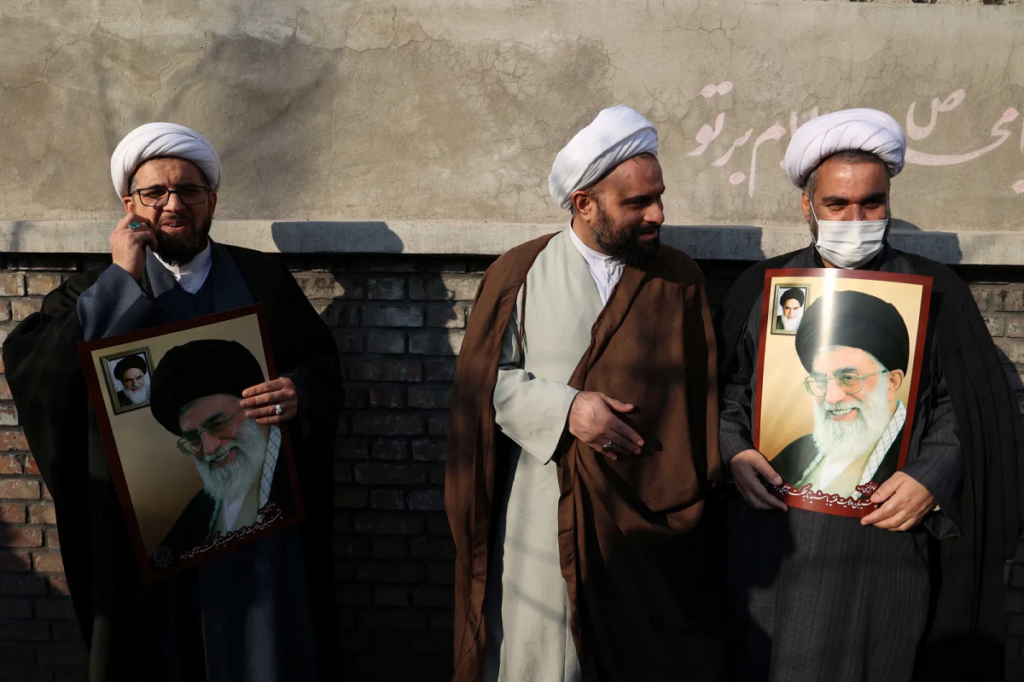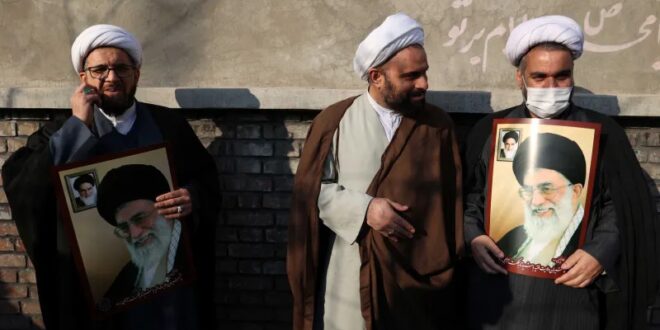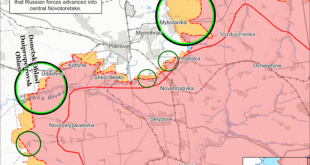
How Months of Protest Forged an Even More Intransigent Regime
Over the past five months, a wave of protests has rocked Iran. Young women calling for an end to the compulsory headscarf have been joined by students, laborers, and professionals demanding individual rights, political reform—and even, increasingly, an end to the Islamic Republic itself. These demonstrations posed the most significant threat to Iran’s government since 1979, fueling speculation that today’s theocratic regime could ultimately go the way of yesterday’s monarchy.
For now, the regime has retained the upper hand, thanks to a harsh crackdown by security forces and a lack of leadership and coordination among the protesters. But popular anger is still mounting, and dire economic conditions make further unrest all but inevitable.
So precarious is the regime’s position that many insiders have publicly broken with the government line. Grand ayatollahs in Najaf and Qom, former senior government officials, and even decorated former commanders of the Islamic Revolutionary Guard Corps have criticized the government’s reaction to the protests and decried the extent to which a small group of hard-liners around President Ebrahim Raisi has consolidated control. News outlets popular with hard-liners and close to the IRGC have openly faulted Raisi for his mismanagement of the economy, and regime stalwarts, including former Presidents Mohammad Khatami and Hassan Rouhani and former parliamentary Speaker Ali Larijani, have condemned the government’s harsh reaction to the protests. Such critics have called for meaningful change if the Islamic Republic is to weather the storm.
But there is no evidence that Supreme Leader Ali Khamenei is listening. Since the start of the crisis, hard-liners have tightened their grip on the reins of power. This faction opposes engagement with the West and does not wish to return to the 2015 nuclear deal. At home, it favors isolationism and tight control of the social and political spheres. Abroad, it favors aggressive regional policies and increasing collaboration with Russia. Far from chastened by the protests, in other words, the regime that is now emerging from the initial phase of the unrest is even more intransigent and potentially aggressive than ever before.
KHAMENEI’S HARD LINE
Iran’s hard anti-Western turn is not driven by a desire to defend the regime’s Islamist ideology. In every speech since the demonstrations began, Khamenei has said little about religion—and a great deal about foreign meddling. Khamenei views the protests as a U.S. conspiracy, hatched in concert with Israel and Saudi Arabia, to weaken Iran and topple the Islamic Republic. In his mind, Iran must mobilize all its resources to respond to this assault. Security officials, taking their cue from Khamenei, have blamed satellite television stations and social media campaigns originating in Europe for stoking unrest in Iran and mobilizing public opinion against the Islamic Republic. They have also blamed turmoil in Iran’s Baluch and Kurdish regions on foreign interference. Last fall, Iran mobilized troops along its border with Azerbaijan and warned Iraq that it might cross the border into that country to close down Kurdish separatist camps.
Khamenei is determined to preserve the regime that he has ruled over for more than three decades. He is 83 years old and rumored to be in ill health. Compromise with dissenters at this stage would sully his legacy and could even prove counterproductive. He witnessed firsthand how accommodating protesters only hastened the collapse of the monarchy in 1979.
Instead of caving to the demonstrators or heeding the advice of critics, Khamenei has turned to violence and repression. Since September, hundreds of protesters have been killed and many more maimed in crackdowns by security forces. Thousands of protesters and dissidents are now in jail; four have been executed after summary trials, and several more face the death penalty. The regime has used sophisticated surveillance; threats against families, employers, and businesses of protesters; and propaganda and economic pressure to quell the unrest.
Iran is seeking to become indispensable to Russia’s war effort in Ukraine.
Khamenei has also relied more heavily on the counsel of hard-liners within the IRGC, the intelligence agencies, parliament, and the media. To Khamenei, these are the people who understand the problem as he does, share his distrust of the West, and oppose the nuclear deal as a trap designed to cage Iran. In Khamenei’s mind, their distrust has been vindicated, so they should be empowered to shun the West, restrict and censor the Internet, and pursue economic and cultural autonomy. These views have long existed within the halls of power, but the protests have added to their prominence.
The protests have also dimmed the prospects for restoring the 2015 nuclear deal. Since the demonstrations erupted in September 2022, Western leaders have winced at the suggestion that sanctions could be lifted as part of a nuclear agreement. The Biden administration is even reluctant to pursue the release of U.S. prisoners held by Iran, fearful of the domestic backlash it would incur if Iranian assets were unfrozen as part of any deal. But hard-liners in Tehran are unfazed by Western opprobrium and have invited still more sanctions by executing young protesters and raising the possibility that the EU could designate the IRGC as a terrorist organization.
Iran is heading into choppy waters at the United Nations as well. Tehran’s nuclear infractions have alarmed the International Atomic Energy Agency, whose chief recently told the European Parliament that Iran has amassed enough highly enriched uranium for “several nuclear weapons.” The International Atomic Energy Agency could soon refer Iran to the UN Security Council for censure, raising the possibility that it will reimpose UN sanctions, especially since France, the United Kingdom, and the United States are all eager to maintain an embargo on the sale of arms and missiles to the Islamic Republic. Iran has threatened that it would respond to such a scenario by leaving the Nonproliferation Treaty, effectively declaring that it will become a nuclear state. Doing so could lead to confrontation with Israel, which last month attacked a weapons-manufacturing facility in the Iranian city of Isfahan, and potentially with the United States. As U.S. President Joe Biden has repeatedly stated, his administration will not tolerate Iran becoming a nuclear state.
FROM TEHRAN TO MOSCOW
Iran has responded to its deepening international isolation by drawing closer to Russia. Khamenei and the IRGC have long viewed the Kremlin as a vital ally. Khamenei and Russian President Vladimir Putin share the same jaded view of the West, and Russia’s war in Ukraine has brought into sharper focus Tehran’s and Moscow’s common grudge against the United States. Khamenei brushed aside criticism from within the ruling elite to approve the supply of sophisticated drones to Moscow, which the Russian military has used to wreak havoc in Ukraine. With the United States and its European and Middle Eastern partners arrayed against the Islamic Republic, Khamenei argued, Iran must consolidate its relationship with Russia where it matters most: on the battlefield. Russia’s poor military performance in Ukraine makes Moscow a more valuable strategic crutch because as long as the Kremlin needs Iranian weapons, it is unlikely to turn its back on Tehran.
Iran’s decision to provide Russia with drones predictably deepened Western anger at the Islamic Republic, which in turn pushed Tehran even closer to Moscow. In this vicious cycle, the winner will be hard-liners who have always favored closer ties between Iran and Russia and decoupling from the West. As Iran drifts further into Russia’s orbit, the power of these hard-liners will grow, improving the odds that they will prevail in Iran’s looming succession battle.
Iran is now seeking to become indispensable to Russia’s war effort in Ukraine. The more Putin needs Iran, the more likely he is to flout Western sanctions and provide Tehran with vital military hardware and technology, including advanced fighter jets and air defense systems. Media outlets connected to the IRGC reported last month that Iran will receive two dozen advanced Russian Sukhoi Su-35 air defense fighters by March and is looking to acquire helicopters and an advanced S-400 air defense system, which is capable of tracking U.S. F-35 fighter jets. Such acquisitions would significantly boost Iran’s military capability, enabling it to better counter Israeli air power in Syria and Iraq, as well as U.S. military pressure in the Persian Gulf. They would also give Tehran the confidence to absorb Western pressure and plan for a potential military attack in response to its expanded nuclear activities.
For all these reasons, Iran’s neighbors are growing increasingly alarmed by Tehran’s drift toward Moscow, fearful that it could further entrench Iranian hard-liners and make Iran even more dangerous. Ultimately, the West could face not just separate crises involving Russia and Iran but also the additional problem of managing their joint behavior—a problem that would be larger than the sum of its parts.
ACTION OVER HOPE
Some Western officials and analysts hope that the power grab by Iran’s hard-liners will accelerate the protests and eventually lead to regime change. But hope is a poor substitute for action. Thus far, the United States and European countries have relied on sanctions and threat of war to deter Iran’s aggressive behavior. But Israel is restive and could escalate its efforts to sabotage Tehran’s military and nuclear programs. Doing so would only reinforce Iran’s militant anti-Western convictions and risk an open conflagration that the United States and its allies can ill afford in the midst of their standoff with Russia and China.
Washington and its allies must therefore devise a credible strategy to at least slow Iran’s hard-line turn. Such a strategy will require coupling threats and punishments with dialogue on the most urgent dangers emanating from the Islamic Republic, including Iran’s role in the war in Ukraine and the expansion of Tehran’s nuclear program. Iranian and Ukrainian officials recently met in Oman to discuss Iran’s role in the war. This was a good start. Europe and the United States should build on such efforts, launching a broader diplomatic initiative that goes beyond the stalled nuclear talks to encompass Ukraine and regional issues. Otherwise, Iran’s hard-liners will continue to push the country in an ever more dangerous direction.
 Eurasia Press & News
Eurasia Press & News

